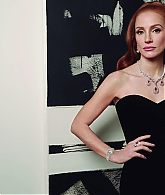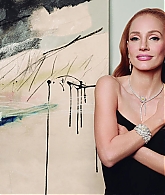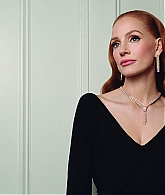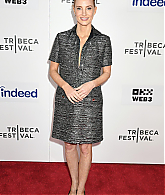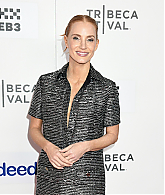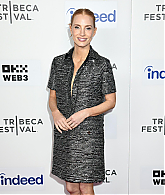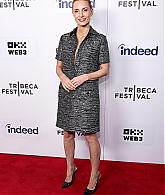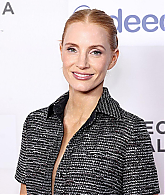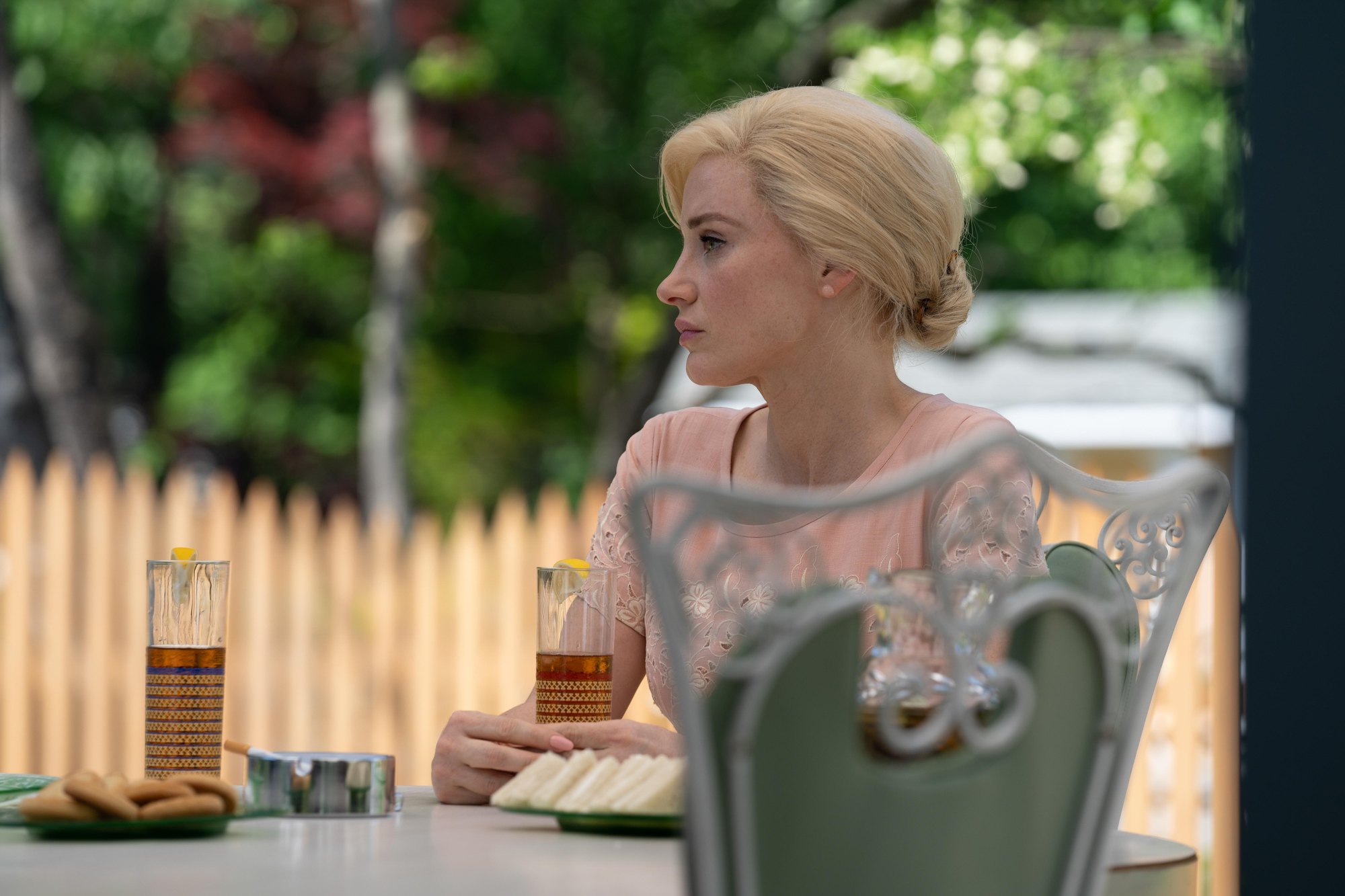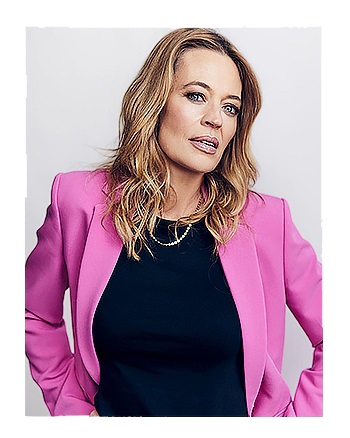 elcome to Jessica Chastain Network, your oldest and most complete resource dedicated to Jessica Chastain. You may better remember her as Molly Bloom in Molly's Game or Maya in Zero Dark Thiry. Academy Award winner for The Eyes of Tammy Faye, Jessica spans her career from big to small screen, seeing her not only in movies like The Help, The Debt, Miss Sloane, Woman Walks Ahead, The Zookeeper's Wife, The Good Nurse, she also played some iconic roles for series like Scenes from a Marriage and George & Tammy. Recently she registered a podcast series, The Space Within, and had a role in Memory and Mothers' Instinct. This site aims to keep you up-to-date with anything Mrs. Chastain with news, photos and videos. We are proudly PAPARAZZI FREE!
elcome to Jessica Chastain Network, your oldest and most complete resource dedicated to Jessica Chastain. You may better remember her as Molly Bloom in Molly's Game or Maya in Zero Dark Thiry. Academy Award winner for The Eyes of Tammy Faye, Jessica spans her career from big to small screen, seeing her not only in movies like The Help, The Debt, Miss Sloane, Woman Walks Ahead, The Zookeeper's Wife, The Good Nurse, she also played some iconic roles for series like Scenes from a Marriage and George & Tammy. Recently she registered a podcast series, The Space Within, and had a role in Memory and Mothers' Instinct. This site aims to keep you up-to-date with anything Mrs. Chastain with news, photos and videos. We are proudly PAPARAZZI FREE!

 elcome to Jessica Chastain Network, your oldest and most complete resource dedicated to Jessica Chastain. You may better remember her as Molly Bloom in Molly's Game or Maya in Zero Dark Thiry. Academy Award winner for The Eyes of Tammy Faye, Jessica spans her career from big to small screen, seeing her not only in movies like The Help, The Debt, Miss Sloane, Woman Walks Ahead, The Zookeeper's Wife, The Good Nurse, she also played some iconic roles for series like Scenes from a Marriage and George & Tammy. Recently she registered a podcast series, The Space Within, and had a role in Memory and Mothers' Instinct. This site aims to keep you up-to-date with anything Mrs. Chastain with news, photos and videos. We are proudly PAPARAZZI FREE!
elcome to Jessica Chastain Network, your oldest and most complete resource dedicated to Jessica Chastain. You may better remember her as Molly Bloom in Molly's Game or Maya in Zero Dark Thiry. Academy Award winner for The Eyes of Tammy Faye, Jessica spans her career from big to small screen, seeing her not only in movies like The Help, The Debt, Miss Sloane, Woman Walks Ahead, The Zookeeper's Wife, The Good Nurse, she also played some iconic roles for series like Scenes from a Marriage and George & Tammy. Recently she registered a podcast series, The Space Within, and had a role in Memory and Mothers' Instinct. This site aims to keep you up-to-date with anything Mrs. Chastain with news, photos and videos. We are proudly PAPARAZZI FREE!
Musings on a Muse: Jessica Chastain
Diane Solway
January 1, 2013
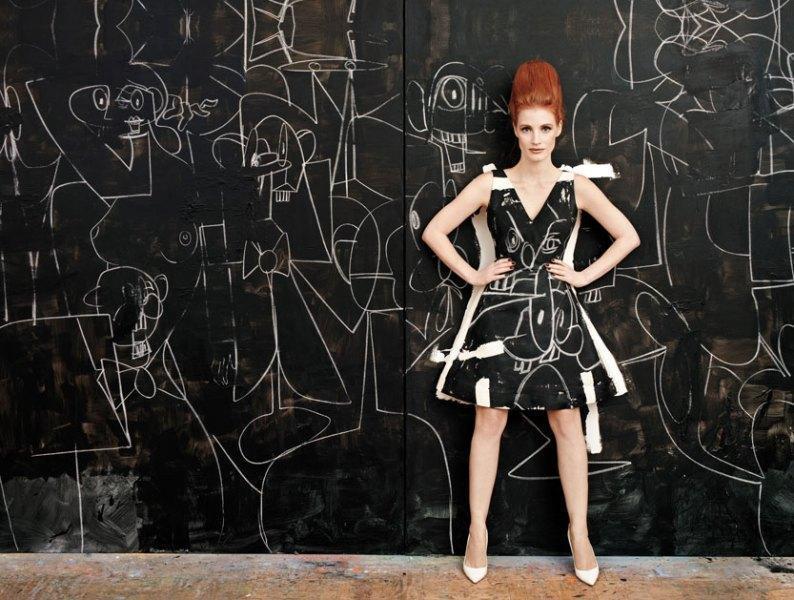
Article taken from W Magazine.
Actress Jessica Chastain plays human canvas to four leading artists of the day.
GEORGE CONDO
Though best known for his fiercely wacky portraits, the American artist George Condo is as much a portraitist as he is an abstract expressionist. “I love the idea of two incompatible worlds brought together—opposing forces harmonically melded,” he says. When he met Chastain, his plan was to create two artworks—and cast her not as their subject but as a character in them. “I wanted Jessica to become part of the painting and then appear to come off it, as if she were breaking free and leaving behind an empty space,” he says. “I liked that the paintings were 3-D.” To achieve that effect, Condo designed two simple canvas dresses for Chastain, taping them to the canvas and painting over them so that when they were removed, they would leave a blank space but appear to be a fragment of the piece. Standing in front of Condo’s Abstract Conversations, 2012, with her red hair teased to eternity, Chastain blended into the cacophony of line and color, a member of the loopy crew. As Condo studied Chastain posing next to the other figures in the work, he began drawing a cluster of noisy characters close to her head to give the impression “that they were yelling into her ear.” While Chastain was having white makeup applied to half her face, Condo grabbed a scrap of paper and created an eye for her to use as a prop. “I thought if she just held it in front of her, it would give a real sort of Stanley Kubrick feel to the experience.” The result, of course, is suitably schizoid, just as Condo envisioned. “With that popped-out eye, there are two different sides to her face: one hysterical and the other soulful,” he says. “Multiple emotions at the same time.”
RINEKE DIJKSTRA
There’s a breathtaking intensity to Rineke Dijkstra’s videos and large color portraits, perhaps owing to the way the Dutch artist and her subjects lock eyes and dare the viewer to look away. Dijkstra, whose midcareer survey earlier this year at the San Francisco Museum of Modern Art and at New York’s Guggenheim Museum won critical raves, focuses on people poised on the cusp of change: adolescents on the beach, mothers clutching newborns, bloodied bullfighters. Her subjects are aware of the camera but not practiced at manipulating whom it sees. Unlike them, of course, Jessica Chastain is well-versed in the art of presenting herself. Still, for Dijkstra, the process is always the same. Working with a 4×5 format camera, she places her subjects against a nondescript backdrop and waits for something to happen. “There has to be an interaction for the photograph to work,” Dijkstra says. “We have to be interested in each other.” Intrigued by Chastain’s porcelain-pale skin, Dijkstra wanted to shoot her wearing subdued colors that set off her red hair and blue eyes. But beyond the palette, the artist didn’t know what she was going to do until she and Chastain met in the studio. “I always work from observation and try to capture something from the clues I get,” notes Dijkstra, a master at conveying psychological nuance. “If you plan everything, there’s no room for interpretation. And Jessica was really open. She wasn’t hiding.”
CHANTAL JOFFE
Chantal Joffe’s large-scale paintings celebrate the female form even as they distort it—to great effect—with thick, unfussy brushstrokes. Occasionally Joffe will paint her subjects directly from life or from photos she has taken of them, but more often, she borrows from fashion spreads, ads, and friends’ family snapshots. For her portraits of Chastain, Joffe tried something new: She simultaneously drew from photographs Max Vadukul had taken of Chastain in a bedroom at New York’s Gramercy Park Hotel, as well as from her own observations of Chastain, whom she directed in that shoot via Skype from her London studio. Joffe says the red-haired actress reminded her of nudes by Gustav Klimt, Egon Schiele, and Edvard Munch (“Her rawboned face seemed to me quite old-fashioned,” she notes), so the bed was covered with richly patterned fabrics. But when Joffe saw Chastain in person and in real time on her laptop, she says she glimpsed “a slight awkwardness to her that was sort of charming. I wanted to find a way to paint that—to know her slightly so I could hold onto the awkwardness and not make it too smoothed out or pretty-pretty. She had a way of slumping that was really natural. That felt like a blessing to me, because it’s hard for me to edit artifice out of my head.” Joffe first made watercolors to sort out details, then created enormous 10-foot works by using scaffolding. “As they go along, everything seems to become more exaggerated in the paintings. In one, she’s somewhat hunched and looks sort of startled and a bit annoyed; in the other one [above], she seems withheld—but in an empowered way, as if she’s in charge.”
MICKALENE THOMAS
“What’s always intriguing to me is transforming my subjects into a character from another era,” says Mickalene Thomas, whose rhinestone-embellished collage paintings, photographs, and installations have regularly given African-American women a starring role. Posed as reclining odalisques, 1970s divas, and bold nudes, they express Thomas’s fascination with female power and stereotypes of black femininity. For this portfolio, Thomas photographed Chastain in one of the ’70s-inspired domestic interiors she had constructed for her recent retrospective at the Brooklyn Museum. She created “a performance inside a finished work of art” by instructing Chastain to “wait for your man to come home so you can seduce him.” Though Donna Summer blared from a record player and the set was reminiscent of the disco era, Thomas said her references ranged from portraits by Balthus and Edouard Manet to scenes from the 1983 film Scarface. She asked Chastain to channel her own version of the drug kingpin’s moll in that film (played by Michelle Pfeiffer) and had her blinged out from wig to toe in shimmering shades of gold. “I tend to gravitate toward characters who have a razor-sharp edge,” Thomas says. “I saw Jessica’s character as a woman who has conquered her environment. There’s a sense of triumph.” Throughout her career, the artist, who is African-American, has mostly painted “those closest to me—my friends and family,” but she insists that her choice of subject is not contingent on ethnicity. “I’m interested in their energy and the look in their eyes and the confidence they convey. It’s about the essence of their prowess.”
She’s Every Woman
For Jessica Chastain, nothing beats being someone else. Lynn Hirschberg catches up with Hollywood’s most fashionable chameleon.
By Lynn Hirschberg
Acting is about the art of reinvention and transforming oneself into a character. To become someone else—to lose oneself in the guise of another—is, in many ways, the most thrilling part of what an actor does. The alchemy involved in that process is mysterious—a melding of mind-set, physical presentation, and the magical relationship between the actor and the person he or she is portraying. Since all cinematic characters are initially created by writers and directors, actors are the ultimate muses. They give life to other people’s words and vision.
In the past two years, Jessica Chastain has seemed to go from nowhere to everywhere, reincarnating in movie after movie. She was a devoted mother in The Tree of Life; a loud, libidinous Southern belle in The Help; an Israeli Mossad agent in The Debt; and, more recently, a CIA analyst determined to track down Osama bin Laden in Zero Dark Thirty, which is in theaters on December 19, and a black-haired punk-rock chick in the frightening fantasy Mama (due out January 18). “I never want to get bored,” Chastain told me over coffee in early November. It was cold, and her delicate frame was nearly swallowed by a large leopard-print scarf. She was wearing no makeup, and her wavy red hair was loose. It was just four days after Chastain’s debut on Broadway in The Heiress, in which she plays a socially awkward virgin. “I wear a prosthetic nose,” Chastain said, sounding delighted. “I learned how to put it on myself.” She patted her nose. “I like the ritual. I love wigs, I love costumes, I love anything that will get me into the character.”
Four years ago, when Chastain heard that the reclusive writer-director Terrence Malick was going to finally make his long-awaited semiautobiographical film, The Tree of Life, she immediately envisioned herself as the loving maternal center of that movie. “I can’t say why, exactly,” Chastain said. “Back then, I hadn’t been getting any auditions for films, so I was doing guest spots on TV shows, and, for some reason, on those shows I got raped a lot. I was always cast as the victim. When I heard about The Tree of Life, I felt like I belonged in that world.”
There was no script—at her audition, Chastain was asked to put a baby to sleep and to look at someone admiringly. “They showed me a poster of Ethan Hawke’s face and said, ‘Look at that with love and respect.’?” But, as is her custom, Chastain had already plunged into the depths of the role. By the time she was given the part, Chastain had gone to Kansas, where she stayed on a farm; studied Lauren Bacall in her early films to capture her slow way of talking and moving; and examined the graceful expressions of various classical Madonna paintings at New York’s Metropolitan Museum of Art. She even attended classes at a meditation retreat in Arizona called, oddly, Tree of Life. “I wanted to slow down the mad monkey of the mind in order to cultivate a kind of inner calm that would translate to the film. I knew I had to give myself over to the movie and to Terry [Malick]. That kind of immersion is so wonderful—it’s why I love working with artists.”
Perhaps that’s why when we asked Chastain if she would allow herself to be reimagined by the visual artists George Condo, Rineke Dijkstra, Chantal Joffe, and Mickalene Thomas, she jumped at the opportunity. We already knew she could hold her own under such scrutiny: Last May, W featured Chastain, who is now the face of Manifesto, Yves Saint Laurent’s new perfume, in a couture portfolio. In record time, she invented a different character for each look and made the clothes come alive, as if they were inhabited by elaborate personalities.
Chastain said she wanted to “become the canvas” for the artists—but that doesn’t mean she was a passive participant. When Thomas asked the actress to channel Michelle Pfeiffer from Scarface for one tableau, Chastain was already imagining herself in the next scenario—as Diana Ross playing Billie Holiday in Lady Sings the Blues. “As a little girl, I wanted to be Diana Ross in that movie. And when I put on the red Afro wig, I finally felt like her.” With Condo, Chastain was excited about the prospect of having her face painted. “I love the feeling of giving myself over to another strong point of view. It’s the best kind of trust—the belief that an artist will take care of me while creating something unique.” Joffe interacted with Chastain remotely—afraid of flying, the artist Skyped from her studio in London while Chastain simultaneously posed in a hotel room in New York. “I never saw Chantal in person, but her softness and phobic nature affected me,” Chastain says. “I could hear the mix of shyness and strength in her voice, and I tried to channel that feeling. I found Chantal very feminine, so I moved that way. I fixed my hair by the window, I slouched while seeming intent.” In front of Dijkstra’s camera, Chastain attempted to remain as serene and open as possible. “That is Dijkstra’s mood on set. That photo was probably closest to just being me,” Chastain said, laughing. “And so, of course, I felt the most naked.”
